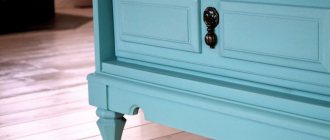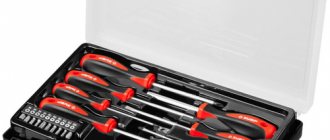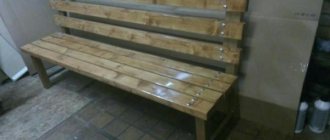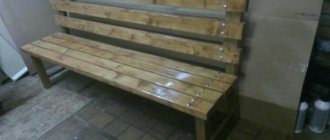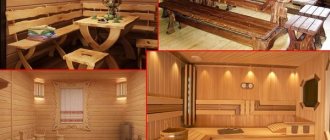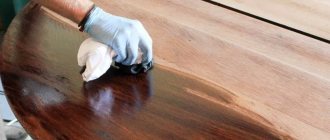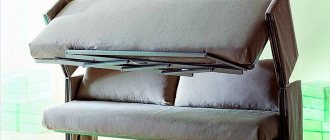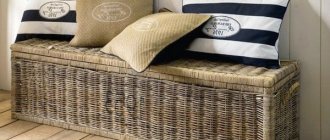Powder painting of non-metallic products
Powder paints non-metallic materials - wood, plastic, glass.
Powder painting is the application of a polymer decorative and protective coating by electrostatic spraying. Dry powder composite dyes melt and harden to create a durable paint layer.
Features of powder painting of non-metallic materials
The surface on which powder paint is applied must have three properties:
- electrical conductivity;
- high temperature resistance;
- strong adhesion (Latin adhaesio – 'sticking').
These properties are absent in wood, plastic, and glass. But modern technologies make it possible to paint non-metallic materials with electrostatic spraying. And non-metals can withstand the minimum temperature of 110-130°C required for melting/spreading of powder paint.
Technology of painting non-metals with powder: general
Common features for powder painting are low-temperature methods and basic stages of technology:
1) surface preparation (activation for electrostatic powder spraying, increasing adhesion);
2) applying paint (with a gun or in a special chamber - depends on the area to be painted);
Differences taking into account the specifics of the material:
- various activation techniques that change the properties of the surface of the material for powder spraying;
- special powder painting technology for each non-metal.
Wood powder coating technology
Powder paints are used to cover not pure wood, but products made from it. Most often - MDF panels.
- laying a layer of electrically conductive primer;
- heating MDF boards to 70-100°C.
2. Application of thermoplastic paints from a special gun using flame spraying. The powder passes through a propane flame under the action of an air stream. The melted paint forms a strong layer on the surface.
3. Melting and baking of paint powder at 120-130°C in a polymerization oven.
4. Hardening under infrared rays.
Plastic painting technology
The technique of powder painting of plastic is determined by its properties:
- low heating temperature threshold;
- low adhesion.
- applying an electrically conductive solution;
- treatment with ionized air (plasma) in an oven.
Electrostatically charged air particles charge the paint molecules. In this case, no preheating is required.
2. Spraying paint.
4. Curing the paint in an infrared oven.
Glass powder coating technology
Powder coating of glass is easier than wood and plastic.
1. Activation can be carried out in different ways:
- preheating the surface to 90-120ºС;
- applying an electrically conductive coating.
2. The method of applying the powder is determined by the activation method:
- Paints are applied to heated glass using a stream of air. Particles suspended in the air, settling on a heated surface, stick to it;
- glass with an electrically conductive coating is dipped into fluidized powder paint.
3. Polymerization in an oven.
- Hardening. The conditions for slow cooling of glass are observed due to its instability to sudden temperature changes.
Source: kaspol.ru
The essence of the process
Powder coating is the application of a polymer layer of paint to the surface of a product, followed by sintering. Moreover, the application takes place in an electrostatic field. Thanks to this, it is possible to obtain an even distribution of the paint layer and minimize the loss of the paint itself.
Until recently, the main focus of this technology was working with metal or other conductive products, due to the nature of the technology. But for other materials there was practically no such possibility.
MDF painting
Medium density fiberboard (MDF) has gained well-deserved popularity in the manufacture of furniture (cabinets, cabinets, shelves) and finishing elements in construction. MDF is often used as wall panels, laminate flooring or acoustic enclosures due to the good soundproofing properties that MDF has. Industrial production of this type of wood material (MDF) began in 1996 in the USA. MDF is the most modern type of wood material, meeting all the requirements of the modern construction market and furniture industry. Nowadays, the leader in production volumes is China. MDF boards have good strength, high durability at an affordable price. To improve the appearance and characteristics of MDF, painting is carried out. This type of treatment, such as painting, is necessary to protect MDF from mechanical damage and moisture absorption.
MDF is a fibrous material made by dry pressing from wood chips at high temperatures. As a result, the environmentally friendly finishing material MDF without resins and phenol comes out of the workshop, which is why we prefer it for use in children’s rooms. The gluing of wood fibers occurs due to the natural element included in their composition - lignin.
The primary process when painting MDF is enamel treatment, which is then coated with varnish.
MDF has advantages over other materials: it is easily amenable to various types of processing, milling, cutting, painting; there are no wood defects in MDF (knots, curling, rot); MDF does not deform due to changes in temperature and humidity, unlike solid wood.
Production features of MDF surfaces
Items made from MDF and subsequently powder-painted are able to withstand all conditions to comply with the international standard DIN 68 930 for the process of painting wooden surfaces, but are not ahead of other coating methods in terms of the quality characteristics of this type of MDF.
Powder-coated wooden pieces of furniture are inferior to metal ones only in terms of chemical resistance; in all other respects, powder painting is superior to all known coating coating methods. From which it follows that any wooden furniture assembled from parts painted in a similar way meets all the criteria established by law, including those regarding furniture for children.
The approximate cost of painting MDF surfaces with powder is calculated based on the cost of powder paint per 1 square meter of MDF surface according to the method: “primer - main layer of paint” is from 2 to 3 euros, and is also determined by the color and structure of the product chosen for painting.
It would seem that with such a reasonable price for the material, the widespread use of powder coating of MDF products is suspended by the lack of necessary tools on the market for applying manual paint.
Attention! All methods of using various liquids proposed in retail sales to increase the electrical conductivity of the MDF surface with further hardening of the powder in an ordinary oven will not work. These charlatan methods were invented to deceive uninformed buyers and only discredit the very idea of powder coating of MDF products.
It is possible to carry out the procedure of powder painting on wood only with specialized equipment, in full compliance with all established technologies and subsequent control over the quality of painting in real time. Only in this way can you obtain a complete and high-quality product.
Leading manufacturing companies on the international market have long been able to adapt serial painting machines for powder coating of MDF. Catalytic furnaces were designed specifically for these purposes with preheating of product surfaces, which is mandatory before powder painting, as well as subsequent hardening of the powder after applying the paint.
Such equipment, due to its high cost, is available exclusively to large manufacturing companies with large volumes of output.
Powder painting of wooden MDF surfaces is used by both the largest international brands, for example the Vitra company (which produces luxury office furniture), and companies specializing in the sale and production of consumer goods, which can safely include the IKEA chain of stores.
Thanks to the development of a method for painting MDF surfaces with powder paint, it became possible to realize any customer’s wishes. Whether it’s painting MDF doors or a complex product shape, a regular or non-standard color palette.
Such items are widely used in creating any interior design. They have a beautiful and elegant design and are in great demand among buyers.
MDF painting technology
As is the case with any type of finishing, painting MDF boards begins with preparation, the surface is sanded, after which the material absorbs the paint composition to a greater extent. You can also paint the MDF surface smoothly after finishing the work.
The next stage of painting MDF boards is priming with an insulating primer and re-sanding, ensuring even greater smoothness. This is the main guarantee of high-quality further painting. Application occurs using a pneumatic sprayer. The first layer is dried for 1 hour, after which the operation is repeated.
The entire range of painting activities is carried out using a sprayer. There are two methods of painting MDF - wet and powder. The number and thickness of paint coats may vary depending on the final color and paint manufacturer.
After completing the steps described above, the MDF boards are thoroughly dried under special conditions. Its duration is usually half a day. Once dry, the MDF is stored and transported to the installation site.
Chemists forum
- business newscompanies and enterprisespetrochemical companiesproductslogisticsshopping centerChemIndexscience newsjobs for chemistschemical exhibitionslaboratory equipmentchemical reagentsscience newsjobs for chemistschemical exhibitionslaboratory equipmentchemical reagentsadvanced searchresource catalogelectronic reference bookabstractschemists forumsubscriptionsurveysprojectsabout uscontacts
Powder coating MDF
Powder coating MDF
Post by MoonDog » Thu Apr 12, 2012 9:11 am
Re: Powder coating MDF
Post by Anatoly16 » Sat Apr 14, 2012 9:35 pm
Re: Powder coating MDF
Posted by Gretchen » Sat Apr 14, 2012 10:55 pm
Re: Powder coating MDF
Post by Anatoly16 » Sun Apr 15, 2012 9:27 pm
Re: Powder coating MDF
Post by MoonDog » Mon Apr 16, 2012 8:03 am
Re: Powder coating MDF
Post by novus » Mon Apr 16, 2012 9:50 am
Re: Powder coating MDF
Post by MoonDog » Mon Apr 16, 2012 10:16 am
Re: Powder coating MDF
Post by Gretchen » Mon Apr 16, 2012 4:59 pm
Re: Powder coating MDF
Posted by mcaa » Tue Apr 17, 2012 7:57 am
Re: Powder coating MDF
Post by MoonDog » Tue Apr 17, 2012 9:46 am
Re: Powder coating MDF
Post by mcaa » Tue Apr 17, 2012 10:03 am
Re: Powder coating MDF
Post by MoonDog » Tue Apr 17, 2012 11:16 am
Re: Powder coating MDF
Post by mcaa » Tue Apr 17, 2012 11:25 am
Re: Powder coating MDF
Post by MoonDog » Tue Apr 17, 2012 11:32 am
Re: Powder coating MDF
Post by Anatoly16 » Sat Apr 21, 2012 8:16 am
Re: Powder coating MDF
Post by avor » Sun Apr 22, 2012 10:01 am
Try painting with two-component thermosets. Polyesters, polyurethanes, epoxy paints.
You praise the powder so amazingly as if you are already working with it and have no problems with it, then why this topic?
Re: Powder coating MDF
Post by Gretchen » Sun Apr 22, 2012 10:17 am
Re: Powder coating MDF
Post by Smol » Sun Apr 22, 2012 12:33 pm
Re: Powder coating MDF
Post by Anatoly16 » Sun Apr 22, 2012 10:24 pm
avor wrote: Try painting with two-component thermosets. Polyesters, polyurethanes, epoxy paints.
You praise the powder so amazingly as if you are already working with it and have no problems with it, then why this topic?
Matte finish technology
To obtain a matte effect on the slabs, the following sequence of operations is used:
- Sanding (P150-180) before priming
- Applying primer for insulation purposes
- Drying up to 1.5 hours
- Lint removal by sanding (P240)
- Second layer of primer (in this case polyurethane)
- Drying
- Third layer of polyurethane primer
- Drying up to 2 hours
- Sanding (P320)
- Enameling with tinted matte enamel
- Drying 4 hours
Technological instructions for powder coating of wood products, fiberboard, chipboard, MDF
Technological instructions for powder coating of wood products, fiberboard, chipboard, MDF
Developed by: Head. lab. TLC Elastomer Center
at KSTU named after. Ph.D.
The conditions for applying powder paint (PC) and forming a coating on wood, MDF, particle boards and fiberboards are very different from the conditions for obtaining coatings on metals. These differences stem from the qualitative heterogeneity of the properties of these materials. The formation of a defect-free PC coating on metals is ensured by such properties of metals as electrical conductivity, high density, and heat capacity.
Wood is a dielectric and has a significantly lower density and heat capacity. In addition, the latter contains a significant amount of water, gas inclusions, sublimating products, resins, etc., which are intensely released when heated. The above reasons make it difficult to obtain high-quality coatings on wood and its processed products, to the point of banning the use of PCs. In order to eliminate the difference in the properties of the above materials, for example, to increase heat capacity, eliminate porosity, bind released products, wooden blanks in autoclaves, at elevated temperatures or in reactors at reduced pressure, are treated with phenol-formaldehyde resins. Subsequent drying at C allows you to obtain a dense, non-porous material that is suitable for painting PC. However, this method cannot be considered fully acceptable due to high unit costs.
As a result of dedicated work over a number of years, we have been able to obtain satisfactory results for painting wood with wood-containing material (WCM), which are presented in this document.
2.
REQUIREMENTS for wood materials to be painted
The following requirements apply to products made from DSM:
1. High density and heat capacity;
2. No or low porosity;
3. Optimally required moisture content;
4. Lack of resinous substances.
The first quality is the high density and heat capacity of the material, which helps ensure good paint flow, reducing defects in the form of shagreen, spots and stripes that differ in the light background, which can be characterized as the presence of different colors on the coating.
The second condition is the absence of porosity, which accordingly leads to the production of a continuous, non-porous coating.
Materials with increased porosity need to be primed more thoroughly and use PCs that mask these defects (PC with hammer effect, matte paints, paints with a moiré effect, orange peel, etc.).
The furniture industry must use material that has matured for a certain time (more than 1 year) in a dry warehouse. This is necessary in order to achieve a certain moisture content of the wooden workpiece (residual moisture content of 7-10%), which during the operation of the product should maintain a constant shape and size (the product should not warp).
Since in the process of obtaining a PC coating on wood it is subjected to heat treatment, the third condition must be met - the optimal moisture content should not exceed 5-7%.
The fourth characteristic determines the very possibility of obtaining a PC coating on wood. Resinous rocks must be pre-dried to the optimum moisture content and completely remove the resins released when heated.
The above requirements are most suitable for the following types of wood - oak, beech, walnut, birch. Resinous species - such as spruce, pine, fir - must be pre-treated using vacuum drying and extraction of resinous substances.
Gloss finish technology
If the customer wants to get a shine effect, then the steps are as follows:
- Sanding in the same way as for matte
- Application of an insulating primer is required to obtain a glossy effect.
- Drying and sanding (P240)
- Primer with polyester composition
- Drying up to 40 minutes
- Second layer of polyester composition
- Drying from 1 to 3 days. The duration is determined by the level of smoothness desired. An ideal surface can be obtained by drying the MDF for about a week, so that unevenness does not appear due to shrinkage. If you need to get ready-to-use sheets as quickly as possible, two days is enough.
Types of application
Before applying heat-resistant paint, it is necessary to prepare the surface for painting:
- remove rust and dirt;
- degrease the surface;
- impact the coating with sandblasting.
Direct application of the dye can occur tribostatically and electrostatically. The dye has high adhesive properties. During the spraying and heating process, it adheres perfectly to the surface to be painted. Paints are characterized by economical use, so they can be used to obtain high-quality coatings at low cost.
offers a wide color palette of low-temperature paints produced in factories in Turkey and China. All products are certified in the Russian Federation and have the necessary quality certificates.
Our products are high quality at low prices, since we work directly without intermediaries.
Why choose us?
Our company offers a full range of services related to the processing of wood fiber sheets. We carry out cutting, painting, milling, and provide assistance in the manufacture of furniture and facade elements.
We fully adhere to painting technology and ensure high performance qualities of the final material. Thus, properly processed MDF will be able to compete with natural wood. Our equipment provides painting across the entire color palette, which gives enormous scope for creativity when decorating the interior. The front side is sanded and the joints of the plates are not visible to the eye. If you need advice or help in choosing the type of slabs you need, our specialists will be happy to help.
Website of the Radalik production complex
Powder polymer painting. Painting MDF and solid wood. Manufacturing of metal products of any complexity.
- Powder polymer painting
- Painting MDF and solid wood
- Manufacturing of metal products of any complexity
There is NO quality guarantee for painting painted products (repainting).
Production of specialized furniture and production of display cases for cultural and educational institutions
For questions regarding the assortment, call: 8 or send a written request from the website.
PRICES FOR MDF PAINTING
We will paint any furniture and interior items made from MDF, in any volume and in a short time! We paint, saw, varnish, enamel and do other similar work.
We paint MDF panels, furniture parts, cornices, paint laminated MDF, interior doors, trim, baseboards, furniture facades, arches, cabinets, walls, etc.
PAINTING STRAIGHT FLAT PARTS made of MDF
| TYPE OF PAINTING | Price, rub. for 1 m2 |
| Silky matte enamel | 2500 |
| High gloss (enamel+varnish) | 5000 |
| Matte painting of the back side of the facades | 2300 |
| The reverse side of the facades is glossy (without polishing) | 4000 |
| Patina | + 1000 |
PAINTING OF MILLED AND ASSEMBLY PARTS OF MDF
| TYPE OF PAINTING | Price, rub. for 1 m2 |
| Silky matte enamel | 3000 |
| High gloss (enamel+varnish) | 6000 |
| Matte painting of the back side of the facades | 2500 |
| The reverse side of the facades is glossy (without polishing) | 4200 |
| Patina | + 1300 |
Where is it used?
Powder paints for wooden surfaces are most often used in the manufacture of furniture. It is especially suitable for products made from MDF (medium density fibreboard). Kitchen furniture, furniture for home and office are made from MDF with this coating. From wooden parts coated with this paint and varnish material, you can make objects with curved shapes and edges without joints.
The palette of these paints is very diverse, all pigments combine well with each other. Therefore, these paints are widely used by designers when using wooden elements as decoration. Using this material, you can apply any design or inscription to MDF, obtaining an exclusive material for making furniture.
PROFESSIONAL PAINTING OF MDF OF ANY COMPLEXITY
On the territory of the main production of the Mikavol furniture factory, a professional painting booth with modern equipment is installed, allowing for any type of painting and processing of MDF.
We will carry out painting work on MDF of any complexity!
In the spray booth we can give the material any effect you want. We can paint it in any color, create a matte or glossy surface, and accomplish any task. All types of painting and material processing will be performed by us in any volumes you need.
Namely, we carry out painting of MDF:
- acrylic paint
- varnish coating
- gloss and enamel
- polyurethane
- facade with auto enamel
- milling
- treatment
- Preparation
- primer
We apply additional special effects to the material, for example, craquelet, metallic, pearls, and so on. Any painting of furniture MDF will be done in our production.
We offer good conditions for long-term cooperation! For regular customers, we provide individual discounts, which the manager will personally tell you about.
Source: micevol.ru
Powder painting: how it happens
To answer these questions, you need to understand the general principle of application. It involves applying coloring pigments to the surface, after which it is baked in a special oven. Melting and melting under high temperature conditions, the paint is absorbed into the surface, which ensures reliable, stable and even painting after the object has cooled.
If the very first experiments with powder coating (by the way, very successful) were carried out only under the condition of placing the object to be painted in a special oven, which significantly narrowed the possibilities of its use, today special tools have already been invented in the form of burners that allow you to “bake” the applied color powder coating.
Thus, the use of ovens is no longer a prerequisite for powder coating, but the need for a specific room remains. Powder painting cannot be done at home or on the street - even today this requires industrial workshops with appropriate equipment.
Today, more and more manufacturers are choosing powder coating. It is used in:
- production of entrance doors;
- production of glass accessories;
- automotive industry;
- furniture production;
- construction.
Can MDF be painted?
Facades, furniture panels, panels, door cladding and other products made from MDF are in great demand due to their characteristics. This is the only material among analogues that can be processed in all possible ways: milling, figured cutting, lamination, laminating, painting. Let's take a closer look at the latter.
This beautiful kitchen façade can be achieved using painted MDF
Painting MDF is a complex process and it begins with the selection of the base material – paint and varnish. If you want to get a perfectly smooth surface with a semi-matte or glossy sheen, then simple oil paint PF-115, even from an expensive foreign manufacturer, is not enough. An inexperienced master will face several problems at once:
- High absorbency of slabs, especially on sharp corners and milled bevels. The facades of furniture, doors or panels can almost completely absorb up to 5 layers of alkyd enamel. Without proper preparation, grinding and polishing, the surface will be uneven, rough, and untidy in appearance and touch.
- During transportation, the unprotected surface of MDF becomes covered with a huge number of scratches, both large and small. The paint fills them and reveals them first. Long grinding and constant monitoring will be required.
- When working, a milling tool literally tears out individual fragments, which causes small holes, dents and other defects to appear. Therefore, in addition to fine grinding, puttying with finely dispersed liquid compounds may also be required.
- Panels, doors and furniture elements made of MDF are almost always installed vertically, so drips, unevenness of the layer, etc. may occur.
- When working with a brush or roller, a large amount of so-called wood fluff rises, therefore, to obtain a smooth surface, sanding is necessary after each applied layer of paintwork.
Small roughness on the surface of MDF is the same “wood fluff”
It turns out that MDF cannot be painted? Our answer is that it is possible, but it is necessary to use a whole range of products, or, in the language of professionals, use a special program of paints and varnishes, which include:
- Several types of primer compositions: barrier primers or insulators with a pore-filling effect, elastic and easily sanded multicomponent compounds, basic pigmented compositions with a solids content of at least 50%.
- Paint with high hiding power, thixotropy, and after polymerization - wear resistance and durability.
- To create a smooth surface with a glossy/semi-matte sheen: varnish or polishing kits (paste + nap disc for polishing).
Powder coating
This is an economical and safe technology that is appreciated by car manufacturers, architects and, of course, furniture makers.
The particles are different. For some, they build Skolkovo and come up with beautiful names. And others simply serve people faithfully and truly. Invented in the 1950s, powder coating technology, in which paint particles are “baked” to the surface, still remains relevant and in demand - and over time it opens up more and more new possibilities.
Magic powder
Powder coating technologies. There are several methods for applying powder coating. All of them are based on a general principle: the paint is “baked” to the surface, but this effect is achieved in different ways. With electrostatic spraying, charged powder particles are attracted to a surface and held there.
The item to be painted is then placed in an oven where the paint melts and is absorbed. Paint can also be applied to a preheated surface. Or it can itself pass through fire and copper pipes, or rather, through a gun with a propane torch, then already molten particles fall onto the surface.
This method is suitable for materials that cannot be placed in the oven, such as wood or rubber.
Today, powder coating can be applied to the surfaces of many materials, for example, blown polycarbonate, from which the lamps in the photo are made.
Who benefits from this? Yes to absolutely everyone. First of all, for the manufacturer, who receives significant savings due to the speed of the automated process and the low percentage of waste: almost 100% of the powder paint is applied to the surface, and the collected residues can be reused.
The consumer is not at a loss either: powder paints do not contain harmful organic compounds and are not flammable - like most polymer coatings, they are dielectrics (it is no coincidence that powder paints are most often used to decorate fire-resistant structures). Paints are resistant to impact and friction, and protect the metal they are applied to from corrosion. Powder coating allows you to reproduce various shades and textures, relief or gloss, imitate metal or stone, “moiré”, “antique” and even leather!
Powder coating allows you to reproduce relief, different shades of color and texture. To obtain a rough texture, products are processed with abrasive tools.
What paints are suitable for MDF
The easiest way to paint laminated boards. This is the surface of finished furniture and door facades, wall and ceiling panels. The film acts as a primer and leveling layer. The following types of coatings are suitable:
- Alkyd, alkyd-urethane or oil-based enamels (Novbytkhim, Dyo, Tikkurilla)
Alkyd enamels Tikkurila
These are household compositions based on synthetic oils or polymer resins. They belong to the universal category, that is, they can be used for interior and exterior work, they have good adhesion to most materials: metal, wood, glass, chipboard, MDF, OSB, etc.
After curing, a dense and durable film is formed, the advantages of which are high hiding power, resistance to mechanical and chemical influences, abrasives, and water.
Among the disadvantages, we note a strong chemical smell that negatively affects human health, as well as a huge amount of low-quality products on the shelves of stores and markets.
- Enamels based on polyurethane resins (Elakor, Ive, Teknos)
We paint correctly and according to the rules
Let's define what MDF is. This is a tile material that is made by pressing wood chips. That is, we are dealing with wood board and all the physical properties of wood.
To understand how to paint MDF, let’s determine the capabilities of the material:
- Excellent ability to withstand moisture.
- Resistance to sudden temperature changes.
- High strength indicators.
Advice! Taking into account all these parameters, it is necessary to choose a paint suitable for the material, which could change not only the external and visual indicators, but also improve the performance characteristics of the wood board.
It is the ability to withstand moisture that allows you to create excellent kitchens from painted MDF, in which air humidity can reach 80%.
It must be emphasized here that wood panels:
Painted wood panel in the kitchen takes on a whole new look
- Absolutely safe for humans, as well as for the environment, as they do not contain dangerous compounds and toxins.
- Capable of providing long-term resistance to the spread of microorganisms over the surface of the slabs.
- The same applies to the spread of fungus or mold.
- Good sound insulation.
Coloring rules
If you are wondering whether it is possible to paint MDF panels, then knowing certain nuances of the material itself, you can answer positively.
However, for proper staining, the following steps must be strictly followed:
- The surface of the panel must be completely degreased.
Advice! Today there are a huge number of different solvents that perfectly eliminate fats, but their chemical composition can have a destructive effect on the surface of the panel. Therefore, it is best to use the simplest detergents that are used in everyday life.
- Before you start applying paint, you need to treat the wood surface with an acrylic primer. This will not only ensure normal adhesion, but will also ensure that the old coating does not show through.
- Application can be carried out either with a roller, a spray gun or a simple brush.
One example of a spray gun that will be needed to apply paint
Benefits of painting
The growing popularity of painting wood chip panels has a very practical explanation. Just as fire-retardant paints for metal Polistil serve as protection for metal, certain paints and varnishes are designed to enhance the protection of the slab (read also the article “Painting MDF furniture facades”).
Therefore, we will determine the obvious advantages of applying paintwork:
- The surface under the paint layer is able to resist elevated temperatures. Nobody talks about a fire, but, for example, in the kitchen, hot utensils can often be placed on such a surface.
- Naturally, after painting, the material immediately becomes stronger, and its service life exceeds the service life of untreated slabs.
- Visually painted MDF or plastic can fit more easily into a variety of designs.
Painted wood material instantly changes the visual appearance of any kitchen
True, there is a small but significant drawback: after painting under ultraviolet rays, the paint may fade. But this does not happen immediately, but over time.
Despite the fact that panels can be painted with powder paint and enamel, polyurethane paint is most suitable for MDF, which fully meets all the requirements for the surface to be painted.
Polyurethane dye can completely change the structure of MDF externally
Preparation
You can’t just take and apply paint and varnish; the wood surface must be properly prepared.
First you need to collect the necessary materials, and these are:
- Paint, for example, is polyurethane.
- Primer. Here you can use either a wood primer or a polyurethane-based mixture.
- Varnish.
The primer can be applied to the surface with a simple brush, however, this is not the best existing option.
The preparation for coloring itself is divided into several stages, and each of them can be done with your own hands:
- The plate must be sanded. Simple fine sandpaper is also suitable for this. Sanding increases adhesion and absorption of the paint layer.
- The second step is to carry out tinting. The paint must be mixed and prepared in advance and in one color.
- A small amount of hardener is added to the primer.
Tinting will allow you to bring all the material to the same color
Once the priming composition is ready, it must be filtered. Next, it is worth noting that the primer should be applied not with a brush, but with a spray gun. No, no one prohibits working with a brush or roller, but the primer will be applied more accurately and efficiently using a pneumatic sprayer.
Advice! When choosing a sprayer, note that the size of the “gun” nozzle should be about 2 mm. The primer is sprayed under pressure of 3 atmospheres. And yet, the primer must be used within 3 hours from the moment of preparation.
The thickness of the layer will be in the range of 100-140 microns and as soon as it is applied, drying can begin. If we are talking about a polyurethane layer, then the instructions say that it will require a temperature ranging from 16 to 40 ° C. On average, it takes 5-6 hours for the layer to dry completely.

